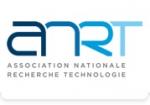GAI-enhanced Network Traffic Analysis in Cloud-Edge-IoT Continuum (GeNTAC)
| ABG-132374 | Sujet de Thèse | |
| 30/06/2025 | Contrat doctoral |
- Informatique
- Science de la donnée (stockage, sécurité, mesure, analyse)
Description du sujet
Context
The increasing adoption of IoT devices and edge computing has led to an explosion of network traffic across a heterogeneous cloud-edge-IoT continuum. Traditional centralized AI-based network analysis solutions often suffer from scalability issues, data privacy concerns, and high communication overheads. Federated Learning (FL) has emerged as a promising paradigm that allows decentralized model training without transferring raw data. However, conventional FL approaches do not fully exploit the hierarchical structure of modern networks, where different layers (IoT, edge, and cloud) exhibit distinct characteristics in terms of computational resources, data distribution, and network connectivity. Hierarchical federated learning (HFL) extends FL by introducing a multi-tier training approach where local models are aggregated at multiple levels (edge and cloud), reflecting the natural structure of distributed networks. This hierarchical approach enables efficient learning across a continuum of devices, optimizing both latency and computational efficiency [1]. The integration of Generative AI further enhances the capabilities, enabling data augmentation [2], anomaly detection, and network behavior prediction with minimal data.
Objectives
This project aims to develop an HFL [3] framework integrated with Generative AI for network analysis within the cloud-edge-IoT continuum. This framework will be designed as a multi-tier system, where federated learning is conducted across IoT, edge, and cloud layers, ensuring efficient collaborative model training. To enhance its effectiveness, Generative AI models (such as GANs, VAEs, and Diffusion Models) will be utilized to generate synthetic network traffic data, improving anomaly detection and data augmentation. Additionally, the project aims to optimize communication efficiency by implementing knowledge distillation and adaptive model compression, reducing the size of federated updates and lowering network overhead [4]. Ensuring data privacy, the framework will incorporate efficient aggregation techniques [5], protecting sensitive network information across the cloud-edge-IoT hierarchy. Finally, the effectiveness of the proposed framework will be evaluated on real-world network traffic datasets, assessing improvements in anomaly detection, traffic prediction, and classification accuracy, demonstrating its potential for scalable, secure, and adaptive network traffic analysis.
Scientific methodology
This project is structured around 3 key components: Hierarchical Federated Learning (HFL) architecture, integration of Generative AI, and optimization of communication overheads. The proposed HFL framework follows a three-layer hierarchical structure, where the IoT layer consists of low-power devices and sensors (e.g., smart meters, surveillance cameras, wearables) that generate real-time network traffic data. These devices train lightweight models locally and send updates to the edge layer, where edge nodes (e.g., gateways, base stations) aggregate these updates and refine models based on localized network behaviors. Finally, the cloud layer aggregates models from the edge, performs global training using deep learning architectures, and redistributes refined models back to the edge and IoT layers, ensuring continuous adaptation to dynamic network conditions.
To enhance HFL for network analysis, Generative AI models will be integrated to improve data augmentation, anomaly detection, and traffic forecasting. Generative Adversarial Networks (GANs) and Variational Autoencoders (VAEs) will generate synthetic network traffic data, improving model generalization in low-data scenarios, in addition to IoT traffic simulator/emulator [6]. Anomaly detection will be addressed through VAEs and Diffusion Models, which learn latent representations of normal traffic and flag deviations indicative of anomalies. Additionally, Explainable AI (XAI) algorithms will be applied to black-box models to enhance human operators' and designers' understanding by extending a current work [7]. Furthermore, generative sequence models, such as Transformer-based architectures, will be employed for traffic forecasting, enabling better bandwidth allocation and congestion management.
One of the critical challenges in HFL is the high communication overhead resulting from frequent model updates across the cloud-edge-IoT continuum. To mitigate this, the project will implement adaptive model compression techniques, including pruning and quantization, to reduce the size of federated updates. Knowledge distillation will be explored to transfer insights from large cloud-based models to smaller edge and IoT models, ensuring lightweight yet effective learning. Furthermore, asynchronous HFL aggregation will allow nodes to update models at different frequencies, reducing synchronization delays and improving learning efficiency across heterogeneous devices. This methodology ensures that the proposed HFL framework is scalable, efficient, and well-adapted for real-world network environments.
Expected results
The expected results include the development of a scalable Hierarchical Federated Learning framework capable of analyzing network traffic across IoT, edge, and cloud infrastructures, ensuring efficient decentralized processing. By integrating Generative AI models, the framework will enhance traffic classification and anomaly detection by leveraging synthetic data generation, improving model generalization and performance in data-limited scenarios. Additionally, the project will implement efficient communication mechanisms to reduce bandwidth consumption in federated learning training, optimizing resource utilization across distributed networks. Furthermore, the framework will contribute to enhanced network security by enabling proactive anomaly detection and federated intrusion detection systems, ensuring real-time identification and mitigation of network threats. Overall, the project aims to provide a privacy-preserving, adaptive, and high-performance solution for network traffic analysis in modern cloud-edge-IoT environments.
References
[1] Wang, K., He, Q., Chen, F., Jin, H., & Yang, Y. (2023). FedEdge: Accelerating Edge-Assisted Federated Learning. The Web Conference.
[2] Li, Z., Chen, Z., Wei, X., Gao, S., Yue, H., Xu, Z., & Quek, T. Q. S. (2024). Exploiting Complex Network-based Clustering for Personalization-Enhanced Hierarchical Federated Edge Learning. IEEE Transactions on Mobile Computing, 1–18.
[3] O. Aouedi and K. Piamrat (2024), Towards a Scalable and Energy-Efficient Framework for Industrial Cloud-Edge-IoT Continuum, IEEE Internet of Things Magazine, 2024
[4] L. Liu, J. Zhang, S. Song and K. B. Letaief, "Hierarchical Federated Learning With Quantization: Convergence Analysis and System Design," in IEEE Transactions on Wireless Communications, vol. 22, no. 1, pp. 2-18, Jan. 2023, doi: 10.1109/TWC.2022.3190512.
[5] Garshasbi, M. (2022). Communication-efficient semi-synchronous hierarchical federated learning with balanced training in heterogeneous IoT edge environments. Internet of Things, 21, 100642.
[6] M. Poisson, R. Carnier, K. Fukuda. (2024). Goth X: a generator of customizable, legitimate and malicious IoT network traffic. Cyber-security Experimentation and Test Workshop, 65-73.
[7] U. Do, L. Lahesoo, R. Carnier, K. Fukuda. (2024). Evaluation of XAI algorithms in IoT traffic anomaly detection. ICAIIC, 669-674.
[8] Petch, L., Moustafa, A., Ma, X. et al. HFL-GAN: scalable hierarchical federated learning GAN for high quantity heterogeneous clients. Appl Intell 55, 170 (2025).
Prise de fonction :
Nature du financement
Précisions sur le financement
Présentation établissement et labo d'accueil
The LS2N Lab (UMR CNRS 6004) at Nantes University (NU) gathers 600 people in all the Digital Sciences. 20+ research teams address computer science and robotics challenges. The STACK research group focuses on challenges related to the management and advanced usages of Utility Computing infrastructures (i.e., Cloud, Fog, Edge, and beyond). The team is interested in delivering appropriate system abstractions to operate and use the next generation of digital infrastructures where data centers, networks, and IoT devices are all integrated. Making significant contributions in this area is critical for the emergence of new kinds of applications related to the digitalization of society (smart-homes, virtual reality, industrial internet, e-health, etc.).
This PhD project is a collaboration between France and Japan. The candidate will be co-supervised by Kandaraj Piamrat (STACK team, LS2N, France) and Kensuke Fukuda (NII, Japan). Both teams offer highly complementary expertise in traffic analysis, collaborative learning, and AI-driven network optimization. STACK team specializes in intelligent network and service management, making them well-suited for developing hierarchical federated learning frameworks and optimizing resource allocation in edge computing environments. On the other hand, K. Fukuda's team focuses on Internet traffic measurement, anomaly detection, and intelligent network control, contributing essential expertise in large-scale network data analysis and security mechanisms. Their collaboration enables a cross-layer approach, integrating HFL model design, generative AI for traffic modeling, and real-world network validation. This synergy ensures that both theoretical advancements and practical deployment strategies are addressed, strengthening the feasibility of the proposed PhD project and maximizing its impact on next-generation network management.
Profil du candidat
Expected Skills:
The candidate must hold a Master's degree in computer science, mathematics, or an equivalent engineering degree.
Required knowledge includes:
• A solid understanding of fundamentals in artificial intelligence
• Strong knowledge of computer networks
Technical skills sought:
• Ability to implement processes and techniques related to AI and networking
• Proficiency in English (reading, writing, and speaking) at a professional level
Cross-disciplinary competencies:
• Ability to design and conduct a scientific project with rigor
• Aptitude for communicating, promoting, and disseminating research results
• Autonomy, sense of responsibility, and ability to report on progress
• Teamwork skills, particularly in an international setting and within collaborative projects.
Vous avez déjà un compte ?
Nouvel utilisateur ?
Vous souhaitez recevoir nos infolettres ?
Découvrez nos adhérents
 Ifremer
Ifremer  Nokia Bell Labs France
Nokia Bell Labs France  CASDEN
CASDEN  ADEME
ADEME  Institut Sup'biotech de Paris
Institut Sup'biotech de Paris  TotalEnergies
TotalEnergies  Groupe AFNOR - Association française de normalisation
Groupe AFNOR - Association française de normalisation  Aérocentre, Pôle d'excellence régional
Aérocentre, Pôle d'excellence régional  ANRT
ANRT  Tecknowmetrix
Tecknowmetrix  Laboratoire National de Métrologie et d'Essais - LNE
Laboratoire National de Métrologie et d'Essais - LNE  SUEZ
SUEZ  PhDOOC
PhDOOC  MabDesign
MabDesign  ASNR - Autorité de sûreté nucléaire et de radioprotection - Siège
ASNR - Autorité de sûreté nucléaire et de radioprotection - Siège  ONERA - The French Aerospace Lab
ONERA - The French Aerospace Lab  MabDesign
MabDesign  Généthon
Généthon  CESI
CESI







